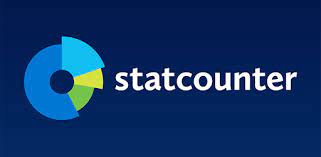Penerapan Teknologi Untuk Menilai Status Gizi Pada Balita
 Abstract views: 168
,
Abstract views: 168
,
 PDF downloads: 575
PDF downloads: 575
Abstract
Parents need to notice attention to the nutritional status of toddlers to prevent nutritional disorders. Therefore, we need a system that can make it easier for parents to access information about the nutritional status of toddlers. The system that can be used is a technology system. The author conducted a literature analysis with a simplified approach in 10 technology journals for assessing the nutritional status of children under five for the 2012-2022 period. Based on this research, the authors conclude that technology to assess nutritional status in toddlers is very effective because it makes it easier for health workers to assess and record nutritional status, it makes it easier for parents to know the nutritional status of their toddlers, but in this study several things that still need to be considered include: understanding the use of technology for parents, the readiness of tools such as smartphones or other software that can be used to access technology to assess the nutritional status of toddlers.
References
Al Rahmad, A. H. (2020). Kualitas Informasi Data Status Gizi Balita Dengan Memanfaatkan Software Who Anthro. Gizi Indonesia, 43(2), 119–128. https://doi.org/10.36457/gizindo.v43i2.353
Dianingrum, M., & Suryanto, A. (2014). Penentuan Status Gizi Balita Berbasis Android Menggunakan Metode Analitycal Hierarchy Process ( AHP ) ( Determination of Nutritional Status of Children Using Android Based Analytical Hierarchy Process. Juita, III(1), 11–17.
Fitri, M. O. (2017). Aplikasi Monitoring Perkembangan Status Gizi Anak Dan Balita Secara Digital Dengan Metode Antropometri Berbasis Android. Jurnal Instek, 2(2), 140–149.
Intan, K. :, Pratiwi, G., Kalimantan, J., & Jember, J. T. (2018). The Effect Of “Status Gizi Balita” Android Applicattion On mother’s knowledge In Nutritional Status Monitoring of Ages 12-24 Months ". Jkakj, 2(1), 8–14.
Riskesdas, 53 Kementrian Kesehatan RI 1689 (2018).
Nugraha, S. D., Putri, R. R. M., & Wihandika, R. C. (2017). Penerapan Fuzzy K-Nearest Neighbor (FK-NN) Dalam Menentukan Status Gizi Balita. Jurnal Pengembangan Teknologi Informasi Dan Ilmu Komputer, 1(9), 925–932.
Saputra, Y. P., Lestari, V. A., & Rahmani, A. D. (2020). Pengembangan Website Sistem Pendukung Keputusan Untuk Menentukan Gizi Balita Di Kota Kediri Menggunakan Metode Fuzzy Mamdani. Seminar Informatika Aplikatif Polinema (SIAP), 241–249.
Sutoyo, M. N. (2018). Rancang Bangun Aplikasi Untuk Memprediksi Status Gizi Balita. Klik - Kumpulan Jurnal Ilmu Komputer, 5(2), 136. https://doi.org/10.20527/klik.v5i2.140
Tumini, T., & Sugiyanti, S. (2020). Penerapan Dynamic System Development Method Pada Sistem Monitoring Status Gizi Balita. Informatics and Digital Expert (INDEX), 2(1), 7–13. https://doi.org/10.36423/ide.v2i1.426
Wajhillah, R., & Mutiara, E. (2016). Penerapan Algoritma C4.5 Untuk Diagnosa Status Gizi Pada Anak Balita Berbasis Website. Swabumi, IV(2), 178–185.
Zuhriyah, N., & Priyandoko, G. (2020). Sistem Pakar Mendeteksi Gangguan Gizi Pada Anak Balita Menggunakan Metode Certainty Factor Berbasis Web. Publishing-Widyagama.Ac.Id, Ciastech, 551–560.














